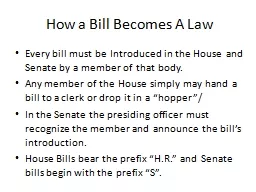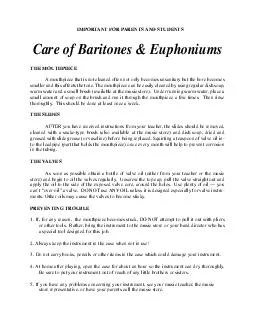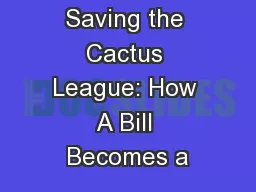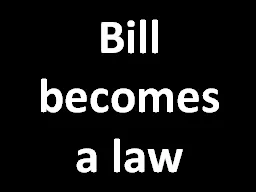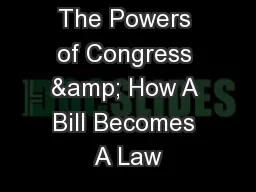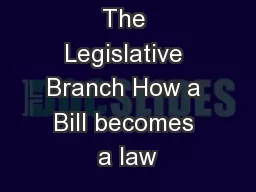PPT-How a Bill Becomes A Law
Author : myesha-ticknor | Published Date : 2016-03-31
Every bill must be Introduced in the House and Senate by a member of that body Any member of the House simply may hand a bill to a clerk or drop it in a hopper In
Presentation Embed Code
Download Presentation
Download Presentation The PPT/PDF document "How a Bill Becomes A Law" is the property of its rightful owner. Permission is granted to download and print the materials on this website for personal, non-commercial use only, and to display it on your personal computer provided you do not modify the materials and that you retain all copyright notices contained in the materials. By downloading content from our website, you accept the terms of this agreement.
How a Bill Becomes A Law: Transcript
Download Rules Of Document
"How a Bill Becomes A Law"The content belongs to its owner. You may download and print it for personal use, without modification, and keep all copyright notices. By downloading, you agree to these terms.
Related Documents

